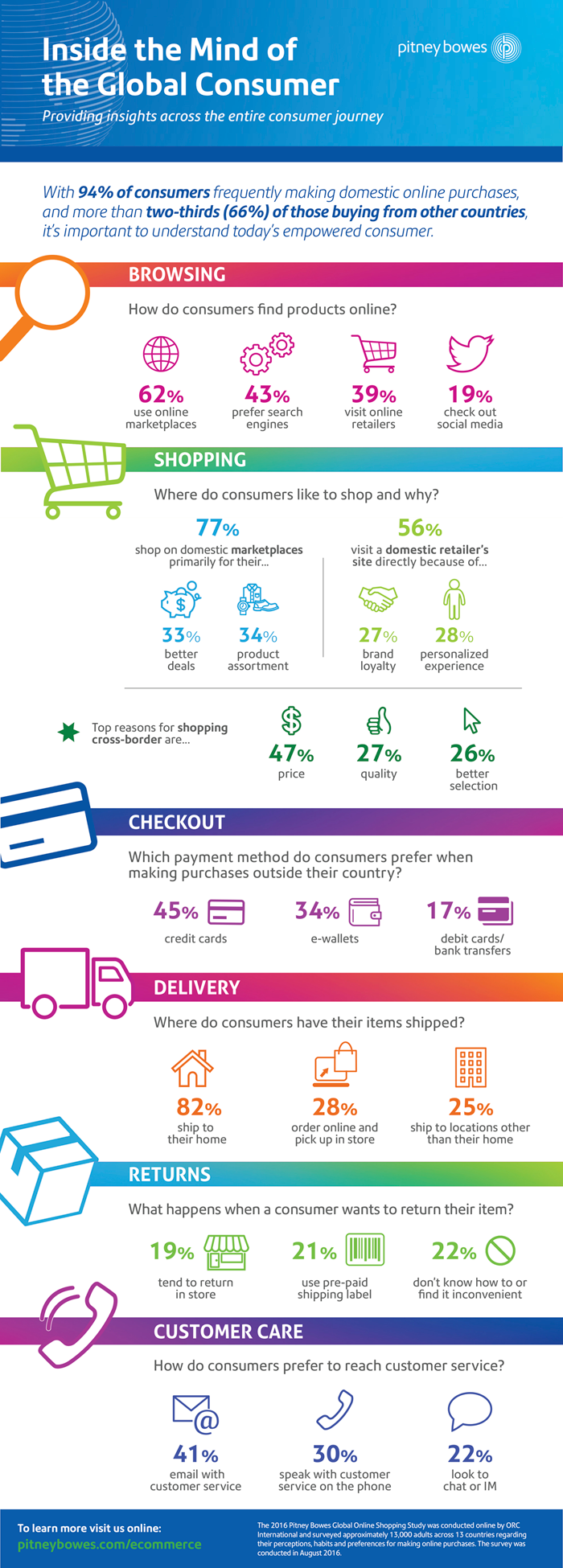66% of Online Shoppers Have Made Recent Cross-Border Purchases

The Internet has afforded many populations with easy access to information on other parts of the world, and even their products too. In fact, a new Pitney Bowes survey finds the majority of global consumers shop cross-border, which has its benefits and challenges for everyone.
The third annual Pitney Bowes Global Online Shopping Survey reports, unsurprisingly, that 94 percent of consumers frequently make domestic online purchases (daily or weekly for a third of shoppers surveyed across 13 countries*), and, more surprisingly, that 66 percent of consumers who have made a domestic online purchase have also made an online purchase from another country in the past year.
Singapore (89 pecent), Australia (86 percent) and Hong Kong (85 percent) have the highest number of cross-border shoppers, while Japan (34 percent) and the U.S. (45 percent) are still weary of cross-border buys.
Pitney Bowes believes that as domestic online shopping becomes more frequent that it can create familiarity and comfort to reach across borders, but retailers still need to ensure they solve global consumers' painpoints like payment methods and online shipping and returns.
- No one payment option was chosen by a majority of cross-border shoppers. Credit cards (45 percent) were the most preferred method of payment online. E-wallets, (e.g., PayPal, Alipay), were identified as another popular payment method (34 percent) for cross-border purchases.
- Despite merchants' efforts, shipping and return policies continue to fail. The most basic elements of the customer experience, such as shipping the right item; accuracy in address and tracking; a transparent returns policy; and proper duty and tax were all cited as challenges. Hong Kong (65 percent), India (59 percent), South Korea (55 percent), Singapore and China (both 54 percent) were among the countries experiencing the greatest headaches with online shopping during the 2015 holiday season.
Additional insights from the global study can be found in the infographic below:
*This year's survey polled Singapore, Hong Kong and Mexico for the first time, where they joined survey participants from Australia, Canada, China, France, Germany, India, Japan, South Korea, the United Kingdom and the United States.

Subscribe to Our Newsletter!
Latest in Marketing









